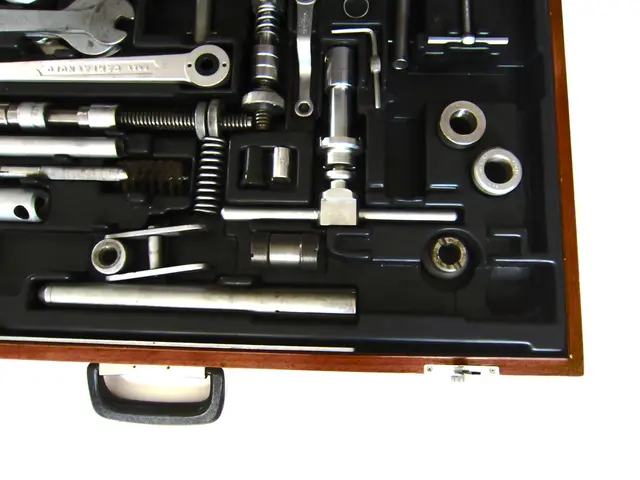Does the claimed driving range of your electric vehicle align with its real-world performance?
In a groundbreaking development, the Australian Automobile Association (AAA) has unveiled the results of its Real-World Testing Program for popular electric vehicles (EVs). The program, which is the first of its kind in Australia, aims to provide consumers with accurate data to make informed purchasing decisions as electric vehicle sales continue to grow.
The tests involved five EV models: the 2024 Smart #3, 2022 Kia EV6, 2024 Tesla Model 3, 2024 Tesla Model Y, and 2023 BYD Atto 3.
Key Findings
- The 2024 Smart #3 achieved a real-world range of 432 km, which is 5% less than its laboratory figure of 455 km.
- The 2022 Kia EV6 had a real-world range of 484 km, an 8% reduction from its laboratory claim of 528 km.
- The 2024 Tesla Model Y recorded a real-world range of 490 km, also an 8% decrease from the laboratory figure of 533 km.
- The 2024 Tesla Model 3 achieved a real-world range of 441 km, 14% less than its laboratory claim of 513 km.
- The 2023 BYD Atto 3 showed the largest discrepancy with a real-world range of 369 km, 23% less than its laboratory figure of 480 km.
These findings demonstrate that real-world driving ranges can vary significantly from manufacturer claims, with reductions ranging from 5% to 23%.
Testing Methodology
The tests were conducted on a 93-km circuit around Geelong, Victoria, incorporating urban, rural, and highway roads. Strict European-based protocols were used to minimize variations due to traffic, driving style, or weather.
Implications and Future Plans
The creation of this program is in response to the Federal Government's New Vehicle Efficiency Standard, which begins on 1 July 2025. The driving range and energy consumption figures for the tested electric vehicles were less than the manufacturers' recorded in their mandatory laboratory tests.
The AAA's Real-World Testing Program will test up to 200 of Australia's most popular makes and models, including electric cars, hybrids, and conventionally powered vehicles. This expansion will provide consumers with a comprehensive understanding of the performance of various vehicles in real-world conditions.
The program is funded by the Commonwealth with bipartisan support, underscoring its importance in promoting transparency and consumer confidence in the automotive industry.
[1] Australian Automobile Association (AAA). (2023). Real-World Testing Program for Electric Vehicles. Retrieved from https://www.aaa.asn.au/real-world-testing-program-for-electric-vehicles [2] Department of Infrastructure, Transport, Regional Development and Communications. (2023). New Vehicle Efficiency Standard. Retrieved from https://www.infrastructure.gov.au/transport/vehicles/vehicle-fuel-efficiency/new-vehicle-efficiency-standard/ [3] European Commission. (2021). Worldwide harmonized Light vehicles Test Procedure (WLTP). Retrieved from https://ec.europa.eu/growth/sectors/automotive/vehicles/type-approval-procedure-and-conformity-of-production/worldwide-harmonised-light-vehicles-test-procedure_en [4] Smart. (2022). Smart #3. Retrieved from https://www.smart.com/uk/en/cars/electric/smart-#3/ [5] BYD. (2023). BYD Atto 3. Retrieved from https://www.byd.com/uk/en/electric-cars/atto-3/ [6] Kia. (2022). Kia EV6. Retrieved from https://www.kia.com/uk/en-gb/new-vehicles/ev/ev6/ [7] Tesla. (2022). Tesla Model 3. Retrieved from https://www.tesla.com/model3 [8] Tesla. (2022). Tesla Model Y. Retrieved from https://www.tesla.com/modely
Read also:
- Revitalize bouncing back: gaming sector rebounds from sales slowdown
- Rapid Growth in Bio-based Polypropylene Sector Anticipated at a Compound Annual Growth Rate of 26.5% by 2034
- Upcoming Hyundai Ioniq 2 to Compete as Economical Electric Vehicle against Renault 4
- Future Event Unveils Innovations in Transportation Technologies








